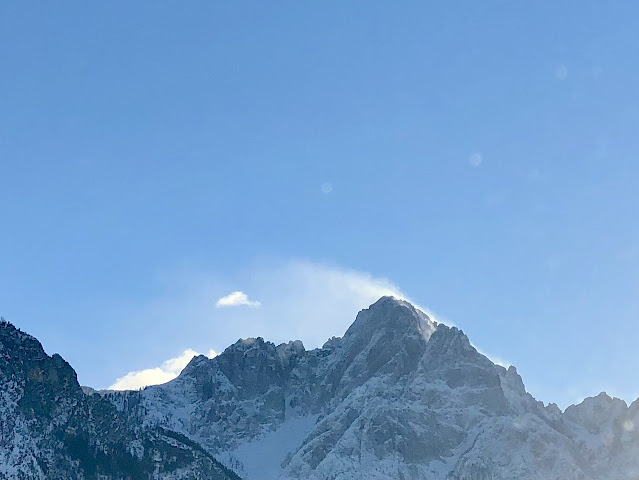Unfavorable influences raising avalanche danger regionally to High.
The forecast of fresh snow for 8 December (often 20-30 cm) combined with strong winds, low temperatures and a snowpack which is already prone to triggering are leading to an increase in avalanche danger. The danger level will reach High in the areas of major precipitation during the daytime on 8 December.
 |
| Presumably a naturally triggered slab release, Ragötzellenke, Deferegger mountains, 2500m, N/NE (photo: 04.12.2021) |
On the one hand, slab avalanches are fracturing in the areas of weak layers at mid-level in the snowpack, particularly on shady slopes. On the other, the current snowpack surface of loosely-packed, cold powder constitutes a further, very easily triggered weak layer for the snowdrift accumulations deposited on top of it. And this applies to all aspects.
 |
| In this photo the very cold, loosely-packed snowpack surface was overlain by shallow snowdrifts. When stepped on, it could easily trigger. Tux Alps (photo: 07.12.2021) |
Complex situation with numerous avalanche prone locations
The situation was already pretty daunting for backcountry enthusiasts, with a pronounced and widespread old-snow problem which is now being overlain by a serious snowdrift problem. That means that avalanche prone locations in outlying terrain will, with increasing wind impact coupled with snowfall, become more and more frequent. In addition, we currently are observing expansive metamorphosis inside the snowpack due to enormous temperature fluctuations (dp.4 – cold on warm), which is generating new weak layers practically before our eyes. This applies in particular to low and intermediate altitudes, that is to say, it is happening in zones which until now tended to be favorable.
We got off lightly with avalanches until now
During the last few days, several avalanche releases have been reported to us in which persons were involved. Maybe it was just good luck that nothing serious happened to these people. For example, below the summit of the Sonntagsköpfl in the Tux Alps, a skier was totally buried in snow during a descent, but beneath one metre of snow was able to be dug out by her companions and in a nocturnal rescue operation was brought, with only a foot injury, safely down to the valley.
 |
| Rescue squad in the wedge of avalanche snow. Sonntagsköpfl. Tux Alps. 2250m, E, 40°. The fracture was up to 2 metres deep in places. (photo: 05.12.2021) |
CONCLUSION
For those venturing into backcountry at the present moment, very good avalanche-science knowledge is essential. It gives cause for concern that even remote triggerings from flat terrain continue to be possible. A truly defensive route selection is imperative.
To repeat it one more time: fresh snowdrift accumulations will be especially easy to trigger throughout the land during the next few days. In fact, on steep slopes they can even trigger naturally, i.e. without any human influence!
 |
| Snow plumes announcing the coming weather deterioration. Lienz Dolomites (photo: 07.12.2021; (c) Thomas Zimmermann) |